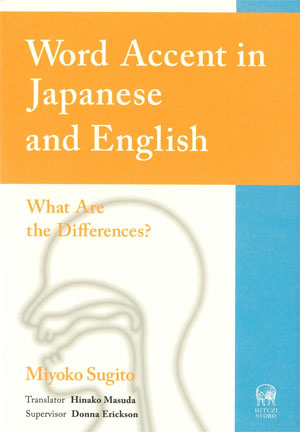2014年5月刊行

Word Accent in Japanese and English
What Are the Differences?
杉藤美代子著 増田斐那子訳 ドナ・エリクソン監修
Author: Miyoko Sugito Translator: Hinako Masuda Supervisor: Donna Erickson
菊判並製 192頁 定価2,200円+税
ISBN 978-4-89476-720-1
 |
Word Accent in Japanese and EnglishWhat Are the Differences?杉藤美代子著 増田斐那子訳 ドナ・エリクソン監修 Author: Miyoko Sugito Translator: Hinako Masuda Supervisor: Donna Erickson 菊判並製 192頁 定価2,200円+税 ISBN 978-4-89476-720-1 |